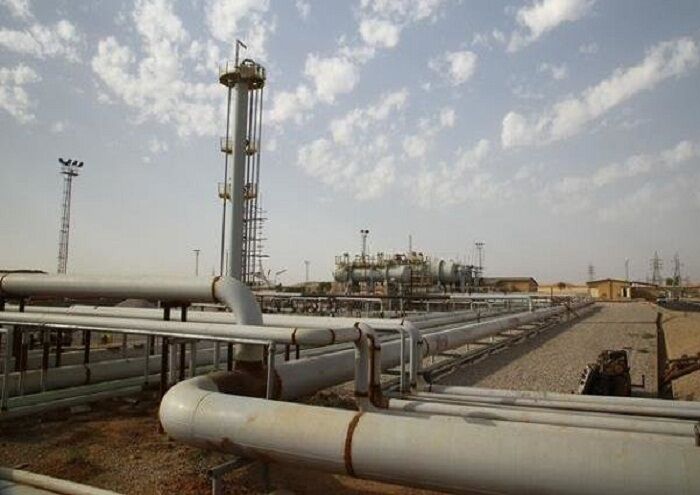Given the significance of projects in West Karoun and the necessity of accelerating the process of recovery from these fields, as well as sanctions in effect against Iran, the bulk of activities defined for the oil production and development cycle, including drilling, oil pipeline building and oil distribution stations in the West Karoun fields have been assigned to domestic companies. Furthermore, the share of job creation for local people has increased in recent years in West Karoun. It has also to be noted that along with the development of West Karoun fields, extensive infrastructure and job opportunities would be created; and economy would grow prosperous, leading to upgraded security along Iran’s borders.
Attracting investment is an effective factor in the development of oil and gas fields. Based on such approach, the undeniable achievement of the Petroleum Ministry in West Karoun is development of fields by Iranian contractors and domestic companies.
Sohrab field is a case in point. A memorandum was signed in 2012 between National Iranian Oil Company (NIOC) and Dana Energy for the development of Sohrab. But the project has been delayed due to various reasons, mainly sanctions. This memorandum contains three phases – preparing a technical report, heads of agreement, MDP and full development. The field was initially planned to be developed during a period of 48-52 months with an investment of $500-600 million. The Sohrab field has capacity to produce 10,000 b/d, but it can supply more than 30,000 b/d.
The Sohrab anticline is located in Abadan Plain, more specifically near the Iran-Iraq border and north of the Azadegan field. NIOC Directorate of Exploration has conducted 3D seismic testing in Sohrab. That was when the Sohrab-1 exploration well was drilled in 2012 to prove oil deposits in the Asmari, Ilam, Sarvak and Kajdomi formations. The second exploration well was drilled in 2014 in the southern part of the field.
Sohrab field is estimated to hold 2 billion barrels of oil in place, 150 million barrels of which is recoverable.
The oil has an API gravity of 16 in the Ilam layer, 17.5 in Sarvak, 31 in Kajdomi and 35 in Gadvan. Well No. 1 of the Sohrab field has been completed for early production by the Arvandan Oil and Gas Production Company.
Big Offshore Field Awaiting Investment
Soroush, which started production in 2001 in partnership with Royal Dutch Shell in 2001, is known as Iran’s largest offshore oil field. Due to natural decline in production trend, this field needs to be upgraded with modern technology in order to be developed. The main reservoir of this field is Bourgen located in the west of the Persian Gulf.
Soroush is located in Bushehr Province, more precisely 83 kilometers southwest of Kharg Island. Discovered in 1962, the field became operational at a rate of 14,000 b/d after the drilling of the first well. The field was harmed severely during the 1980-1988 imposed war. The field halted production during the conflict. Arrangements for the renovation of this field started in 2000 and development of the field began two years later.
Iran’s Petroleum Ministry introduced Soroush for foreign investment during a conference held a couple of years ago to roll out a new type of oil contract. Iran hopes to enhance output from old fields by using big oil companies’ capital and cutting edge technology.
During 15 years of production, Soroush has produced only less than 3% of its reserves, or about 360 million barrels of oil.
Soroush last underwent development under a buyback deal with Shell in 2000. Under this deal, 10 horizontal wells were drilled in the field. In total, there are 32 wells in Soroush, producing oil with an API gravity of 14 to 21. The API gravity of the oil currently being produced is 18.
Soroush remains the largest field owned by the Iranian Offshore Oil Company (IOOC); however, it is among the oldest oil reservoirs in Iran. As a mature and brown field, it needs modern technologies to supply more oil.
The heavy crude oil extracted from Soroush is blended with that of nearby Norouz field to be shipped to the Persian Gulf floating terminal before being sold by the Directorate of International Affairs of National Iranian Oil Company.
A major advantage with the Soroush platform is its simultaneous capability of supply and export of oil and gas. Furthermore, it is among rare platforms where no flaring projects have been implemented. Before Shell, American and Italian companies were developing the field.
Enhanced recovery from Soroush started in the wake of an agreement signed between IOOC and Sahand University of Technology. The agreement was signed by CEO of IOOC and chancellor of Sahand University of Technology.
NIOC officials say Soroush has recovery rate of 5% under normal conditions, which is much lower than that of similar fields. Enhanced oil recovery (EOR) methods would raise the recovery rate to 10 to 15%.
Under the 10-year agreement, universities will be required to conduct EOR studies in a bid to devise short-term and long-term plans for boosting production from Soroush.
NIOC is currently focusing on maximum efficient recovery from oil and gas fields across the country and enhancing oil recovery from Soroush.
Courtesy of Iran Petroleum


Your Comment